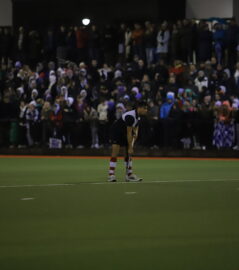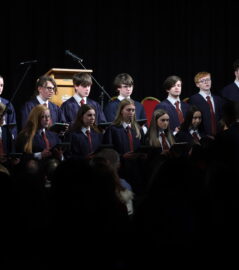There is nothing more motivating (and exciting) as digital creativity in the classroom. I personally think you would be hard pushed to find a teacher who doesn’t love offering their pupils digital creativity opportunities yet we all face the age old problem of having little TIME to learn new technologies and even less time to freely experiment in class.
A few years ago a group of teachers were involved in a digital video collaboration with a number of other schools in Northern Ireland. The project had an ICT focus and we opted to the use of digital storytelling in a range of different subjects. It was hard work but the benefits were amazing both in terms of working with teachers from other schools but also in the skills gained.
This video was created about 5 years ago using a mix of MovieMaker and Premier Express on the PC. Five years ago 320pixel wide video was as good as it got on the web. Video technology has seen a massive leap.
Teachers are hard pushed to find the time for technical professional development on top of teaching a packed syllabus of content, suggest time consuming video creation and the reaction is understandable. The good news is video has just become considerably quicker to capture with the built in iPad video cameras.
1. Video is the new PowerPoint
Fifteen years ago when ICT came to the fore in education the buzz word was PowerPoint. Overhead projectors were pushed to the corner and teachers now had a new tool to their library – the animated transition. Looking to add an ICT dimension to your topic ? get the pupils to do a PowerPoint. The term ‘death by PowerPoint’ was born.
Many teachers realise that PowerPoint simply isn’t going to cut it with today’s pupils. Don’t get me wrong PPT, Keynote and any other communication application still have an important role in teaching it just doesn’t have the same motivational impact it did a few years ago.
Welcome the iPad Video cameras. The iPad Video brings not just high quality but high definition video to the masses that is really simple to edit and present. With these ultra mobile cameras a high quality video can now take less time to produce than a PowerPoint of the same length. Further still, a recent survey of the search activities of children found that YouTube was the most common search term. Many teachers already put their video lessons on YouTube and the iPads make this a very simple process with their direct to YouTube software export.
2. Field Trips
Field trips are an essential part of education. Peat bogs, caves, historic locations are all visited each year by hundreds of pupils and involve some degree of written work on return to school. A few years ago we tried taking the traditional camcorder on trips but battery life, size and the effort needed to edit the footage on return to school rendered it a little useless.
Now instead of clipboards pupils take the iPads to document their discoveries and findings. Better still back in class teachers can answer the “Remember when we were on our field trip?” question with high quality video evidence of the day. In addition we have a number of Flips that can be issued to small groups of pupils for use on the trip.
3. Science Experiments
With every science experiment there are results and what better way to document an experimental process than video. An iPad can quickly and easily record the day’s experiment allowing the teacher to build up a library throughout the year. What better revision resource can a teacher offer than the ability to review the experiment itself via the digital projector or embedded in the subject’s VLE course. All easily achievable in minutes.
4. Journalism and English
Digital Media and Journalism courses are becoming more and more popular both at GCSE and Alevel. Initially we started using the traditional camcorders and tapes for GCSE Journalism. Managing tapes, firewire cables and the amount of time needed to import footage meant video productions were actually too much hassle and effort and worse, were often riddled with frustrating technical issues.
Now the iPad can easily record footage that can be copied straight from the camera to the computer in a matter of minutes. One slight word of caution is that the sound quality (or range of mic) isn’t as great on the Flip cameras as a traditional camera so I would recommend the device is placed a little closer to the action. That said the sound quality is still perfectly acceptable for this sort of work.
5. Drama
Perfect for recording in class drama work for review and feedback on a later date. Footage is imported in seconds and easily presented on the multimedia projector.
6. School Assemblies
The cameras have a two fold use in school assembly. If a class is presenting/performing to the entire school it can involve weeks of nervous preparation. The pupils love nothing more than reviewing their onstage performance later in class and a handheld camera make this an effortless process. Secondly we often use video in our school assembly presentations. Video of public opinion (see student council) can easily be recorded and presented to the whole school.
7. Student Council
Plasma screens, intranet sites and the VLE are all great platforms for student content. Why not give the student council a voice with embedded video. How great would it be to replace the school announcements with a daily video bulletin ?
8. Technology and Design
Like many applied subjects T&D involves a large amount of coursework that starts in September and doesn’t see competition until the April or May of the next year. What better way to document the progress of the work than video. From a teacher’s point of view what better way to present the work to distant moderators than video (check out this example of a still image video).
9. ICT Coursework
Databases and Spreadsheets are now (slowly) being replaced my more exciting media based coursework often including website creation. At Alevel websites have to be mixed content and 2-3 Flip cameras per class means pupils can focus on their website rather than hours of video capture and editing. The Flip cameras also come with software to export directly to YouTube so hosting and embedding the footage is easy.
10. School Websites and PR
What better way to present school life than video ? Even five years ago the work in capturing, editing and presenting a 4-5 minute video amounted to weeks and even months of work. With the Flip camera this process takes minutes and is reasonably effortless.
You might now be wondering , ‘ah, but how much does it cost?’ and strangely the Flip HD cameras are actually more affordable than the traditional camcorders we were using.
Last modified: March 16, 2011









